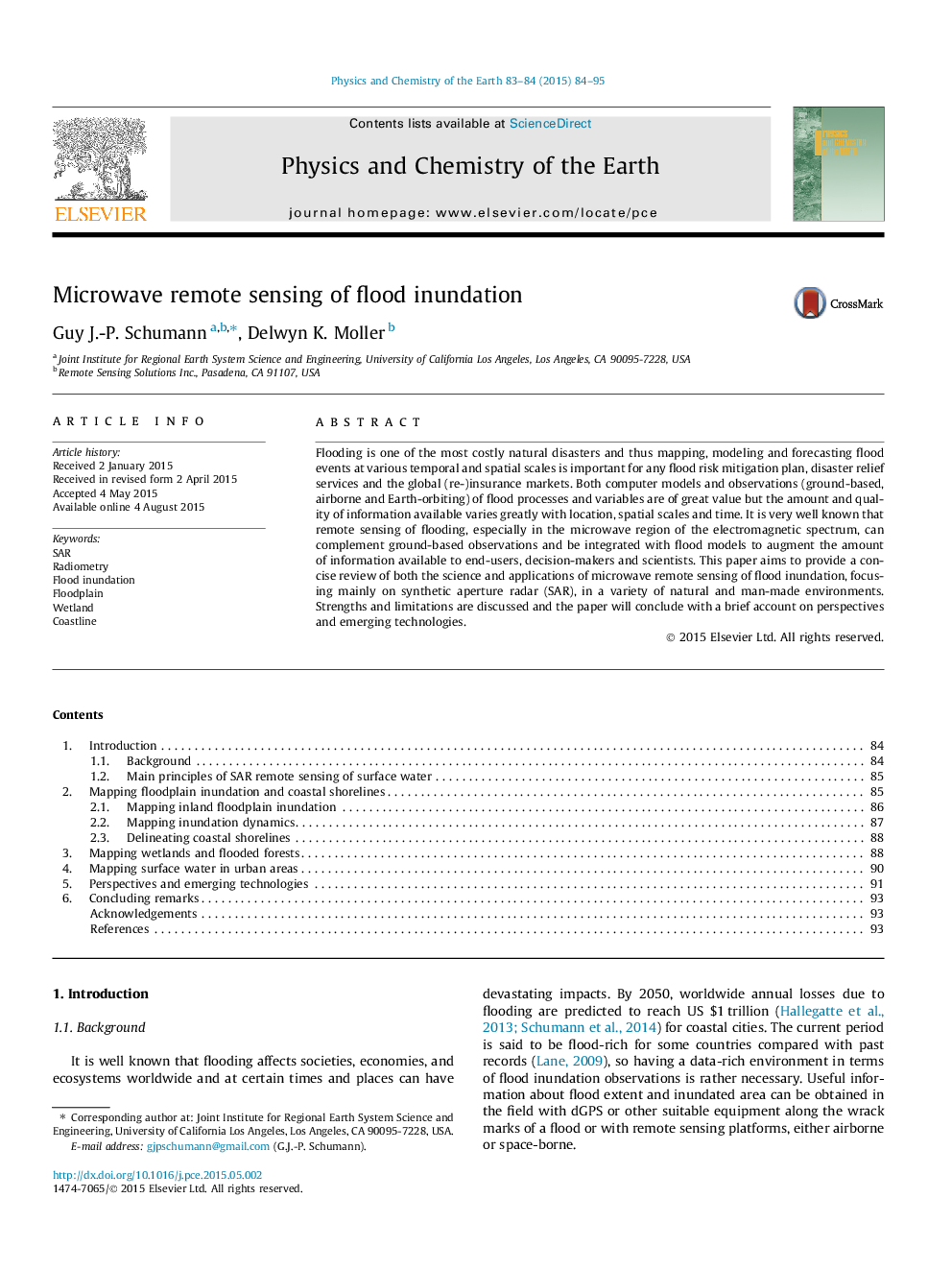| Article ID | Journal | Published Year | Pages | File Type |
|---|---|---|---|---|
| 4720892 | Physics and Chemistry of the Earth, Parts A/B/C | 2015 | 12 Pages |
•SAR for flood applications has grown considerably over the past decade.•Multitemporal SAR can monitor flood dynamics.•High-resolution SAR can map flooding in urban areas.•Long radar wavelengths can detect flooding under dense vegetation.•New SAR sensors expected to have significant impacts on flood applications.
Flooding is one of the most costly natural disasters and thus mapping, modeling and forecasting flood events at various temporal and spatial scales is important for any flood risk mitigation plan, disaster relief services and the global (re-)insurance markets. Both computer models and observations (ground-based, airborne and Earth-orbiting) of flood processes and variables are of great value but the amount and quality of information available varies greatly with location, spatial scales and time. It is very well known that remote sensing of flooding, especially in the microwave region of the electromagnetic spectrum, can complement ground-based observations and be integrated with flood models to augment the amount of information available to end-users, decision-makers and scientists. This paper aims to provide a concise review of both the science and applications of microwave remote sensing of flood inundation, focusing mainly on synthetic aperture radar (SAR), in a variety of natural and man-made environments. Strengths and limitations are discussed and the paper will conclude with a brief account on perspectives and emerging technologies.
